Powerline Based WiFi Extenders May Disrupt MG ZS EV Car Charging UPDATE

Some owners of UK electric vehicles, particularly the MG ZS EV, who struggle to get their cars charged at home are finding that the culprit can sometimes be traced back to the use of Powerline (HomePlug) adapters, which extend your home’s wired and / or WiFi network (LAN / WLAN) by harnessing the building’s existing power cables.
Sometimes running a network cable around your house from the broadband router just isn’t viable for connecting devices, while stretching the WiFi signal may also be tricky. One well known, if still far from perfect, way of tackling this is to consider trying a Powerline adapter that sends the signal over your home’s existing electricity cables, albeit without sacrificing their primary purpose of distributing electricity.
The technology has improved a lot from its earlier generations, which were flaky, sometimes caused interference for other devices (radios etc.) and generally didn’t deliver what was advertised. Such systems were, however, usually also very easy to configure.
Advertisement
In most cases you simply plug one adapter directly into a power socket in one room (never via an extension), then plug the second adapter into another power socket somewhere else in the house, press a button to sync them up and you’re away. The magic happens in the background as the signal is encrypted and sent in digital form via spectrum frequency of up to 86.13MHz – the HomePlug AV2 standard.
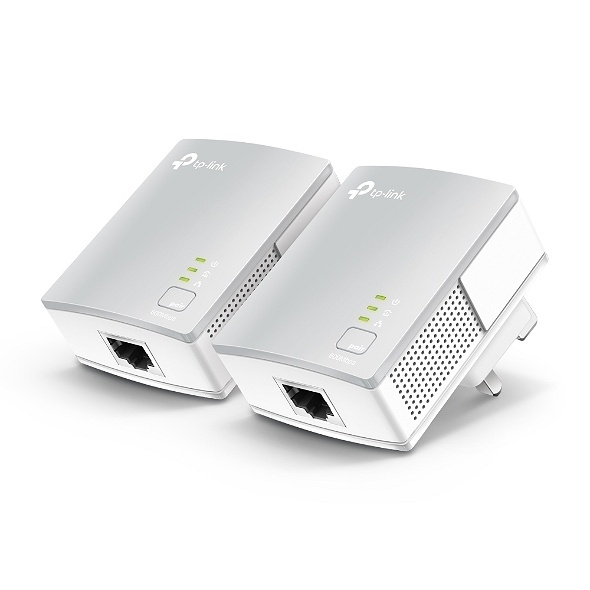
However, recently the odd ISPreview.co.uk reader has found that the use of such adapters to improve their home network was preventing them from being able to charge their MG ZS EV car (i.e. the problem went away when they were unplugged). Upon further investigation we found other people with similar experiences via Speak EV and MG-Rover.org (here, here and here). More gripes were also found on Facebook’s MG group.
The problem appears to occur with all sorts of different smart Wall Chargers (OHME, Rolec etc.), as well as so-called ‘granny cables‘ (i.e. plugging your car in via a normal 3-pin UK power socket). Likewise, it’s been triggered by various different Powerline adapters from companies such as NETGEAR, TP-Link and the Solwise AV2 etc. In all cases, unplugging the adapters solved the charging problem.
Sample Complaint 1
“I finally managed to resolve my charging issue – which is quite niche – but hopefully the solution may be helpful to others who are as perplexed as I was. Looks like the issue was caused by my HomePlug/powerline adapter (Solwise AV2 – now unplugged!). Not sure if the car was trying to call home or something – but now the MG is now fully charging in the drive – which is nice.”
Sample Complaint 2
“Just thought I would make people aware regarding the OHME Wall charger fault that other people might come across. My ohme was installed but every time I tried to charge. It would start to power up then go into stand by mode. Myself and the installer was not sure what was causing it. Thinking it could be the MG ZS EV.
But it was found to be a powerline adapter that I had plugged in for the Tesla power wall. Once I removed it the charger started working straight away. Hope it helps other people and other cars too.”
Sample Complaint 3
“I couldn’t get my MG to charge from three different cables and several charging points in the house, including three-pin sockets for the granny cable and two separate EV wall chargers. Once I removed my powerline adapters, everything was fine. My powerlines are Netgear and TP-Link, so I’m not sure if some are better than others for interference.”
Exactly why these adapters are causing so many problems remains unclear (we’ve seen some theories about interference or a lack of filtering on the car / chargers, but nothing concrete), particularly as it’s been spotted on regular granny cables too, although other issues can affect those so that may be a separate problem that has merely become conflated with this one.
Advertisement
The one good piece of news is that, so far, the bulk of this issue only appears to impact owners of the MG ZS EV (granted that’s not such good news if you have the MG!). We did see some talk elsewhere about it potentially causing problems for other EVs, but not enough to make us comfortable with name dropping any particular brands (feel free to comment below if you’ve spotted a similar issue).
We have asked MG to comment on this and will report back if they respond. In the meantime, if you’re trying to charge your MG ZS at home and have these network adapters plugged-in then it’s probably a good idea to unplug them. The same goes for other EV owners, if only to help identify whether or not this issue hits other cars. As an alternative you could always consider a pure Mesh WiFi system.
UPDATE 16th Dec 2020 – 3:21pm
It took a bit of time but MG’s UK press office has finally given us a statement.
Advertisement
A Spokesperson for MG said:
“Our Engineers in Longbridge and China have been very active is responding to issues and feedback raised by customers in relation to our EV models. This can be seen in the various improvements that have been made in the software updates for ZS EV since launch.
We have been made aware of the Wi-Fi extender issue some customers have experienced when charging their vehicle. Wi-Fi extenders can cause ‘noise’ in the electrical system of a property which may cause interference with the charging cycle of an electric vehicle.
This is not an issue unique to a specific MG model, type of home charger or particular brand of Wi-Fi extender. The car/home charger/wi-fi extender combinations possible, plus the variability of quality and age of domestic electrical systems make this a hard problem to investigate. However we have begun some initial testing to better understand the root cause.”
Mark is a professional technology writer, IT consultant and computer engineer from Dorset (England), he also founded ISPreview in 1999 and enjoys analysing the latest telecoms and broadband developments. Find me on X (Twitter), Mastodon, Facebook, BlueSky, Threads.net and Linkedin.
« Shell Now Favourite to Gobble Post Office Broadband Division
Virgin Media UK’s Next Generation TV 360 Platform Goes LIVE »






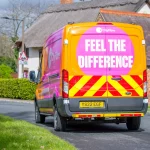
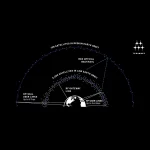

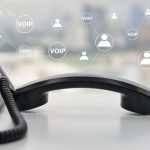



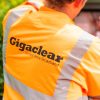
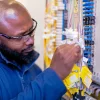







































It seems in the US from subreddits that having ethernet in all rooms is a lot easier than in the UK. Do you think this is down to the construction of houses in the UK?
Mostly down to poor implementation.
I got my house off plan and one of the options was to have it ethernetted all over so I did. But most builders are still in the dark ages and concepts like underfloor heating, ethernet and heat pumps are completely alien to them.
The charge lead is not simply an electrical cable it also a network connection between the car controller and charging unit. Standards are still evolving but protocols such as OCPP allow them to talk to each other. HTTP is utilised and TLS for security. It is quite possible that Powerline concepts are being used and hence this interference could occur on domestic connections.
But the designers must surely have been aware that powerline ethernet existed before they invented their charging systems. Other designs use multiple pins in the charging cable for comms.
Exactly.
I would **guess** the Power line is simply whiting out the control protocols and as the car cannot ‘listen’ for them is defaulting into safe mode.
It is poor implementation as there should be an appropriate RF filter or ability to discriminate PL from other protocols.
The MG therefore cannot actually be CE compliant or comply with any regs over RF.
One of the interesting things that I have learned recently, by demanding compliance test certificates, is that almost nobody does any testing. All the CE is just assumed or guessed. Literally sicker stuck on.
There are a number of competing designs, cables and charging formats and EV very much in its infancy. It may be simply that cheap Powerline units are inducing across wires and interfering with the network so that the car thinks there is an intelligent charger present but cannot log into it and therefore shuts down.
A lot of the cheap stuff we buy from the far east is built to price and whether its Powerline, WIFI, DECT, 4G etc they can generate interference as does other devices in the home cause interference to them.
Hence my point about CE compliance…..
Most things don’t really comply….
the radio spectrum frequencies these ethernet over power adaptors work at is outside the limits required for EMC compliance for domestic equipment (conducted immunity). the MG was compliance tested in the UK to legally required standards and passed likewise it has been checked to ensure it also does not generate noise in this spectrum (as any CE marked electrical device should meet).
as an example, a device is not allowed to generate/broadcast excessive signals in the FM radio band…..unless its a FM radio transmitter. various ISM bands are provided for broadcast signals but these EOP adaptors done even operate in these ISM bands!
The issue is these EOP adaptors have been allowed even though they they do cause issues – https://www.ban-plt.org.uk/what.php:
Powerline networking (PLT) is an unethical technology which causes serious problems for radiocommunications. Despite the non-compliant nature of the technology with established internationally agreed limits for interference, the European Commission has permitted the industry to continue with impunity to the EMC Directive, leading to speculation of corruption within the Commission itself.
EMC experts, organizations, radio users and enthusiasts have tried hard to have their respective national administrations see sense. However in Europe, it has become clear that the Regulators are being directed by the EC’s “no barrier to free-trade” mantra, which is used to ensure the non-compliant technology remains on the open market.
These devices have spent the last few years destroying the HF radio spectrum, much to the annoyance of Shortwave Radio listeners, Radio Amateurs and Citizens’ Band radio users. Not content with that, a new breed of PLT is now available which wipes out VHF as well. You can kiss goodbye to your FM stereo, DAB, business radio, taxi radio, Air Traffic Control and more…
With meshes being so cheap at the moment it makes sense to use those. I could never get powerlines to work well through my house, but meshes work grand. I see the netgear ones are costly but bt do a good one for under £100.
I would rather go hard wired where possible using wired access points for any WiFi clients
My MG refused to charge through home rolec wall charger. But charged at various other charge points.
Until I unplugged my tp link wifi extenders. Not a problem since.
My diesel powered BMW has no such problems when filling up.
If yous loves your diesel so much why don’ts yous marries it.
@Mr Ben. I bet you dream of being filled-up by your dirty diesel.
I have an MG ZS EV and a TP-Link Powerlined up house. I’m not affected by this issue. It may well be that the charger, an older dumb 7kWh charger, connected to an Ohme Type 2 to provide smart, time of use charges (and three pin if I used that). These are connected to a separate consumer unit that serves the garage and attached utility. All powerlines (two wifi extenders, 5 standard powerline plugs) are connected to plugs that are connected to the main consumer unit. The house is over 200 years old, but was re-wried 2 years ago, so again, that may be a mitigating factor of not seeing the issue others have.
What do you expect when RF is induced onto unscreened power lines?. Home wiring was never designed to carry HF RF. These things obtained their CE certification by the back door and cause interference to other services, not only on the fundamental but with harmonics and intermodulation products.
Now they are talking about extending the bandwidth to 200MHz with the possibility of interference to air traffic.